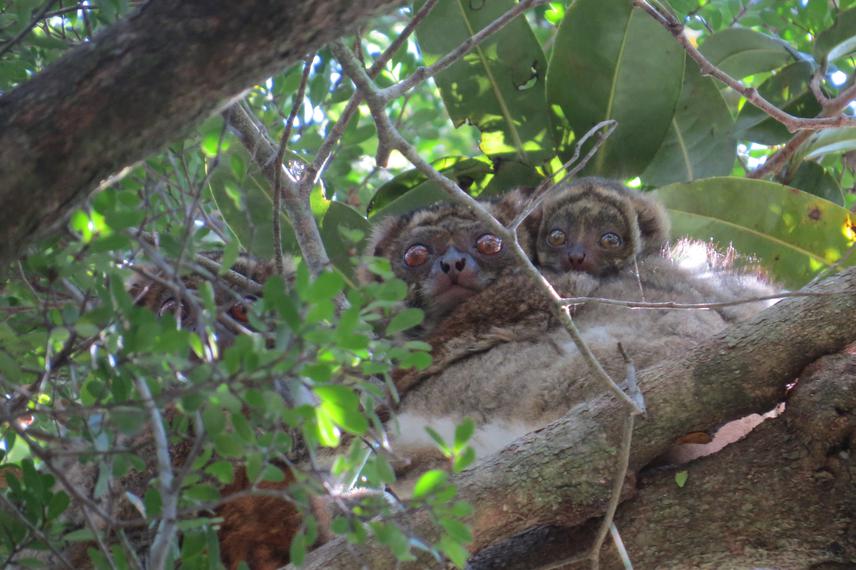Kathryn Scobie
Other projects
4 Aug 2014
The Sleeping Site Ecology and Habitat Use of the Southern Woolly Lemur (Avahi meridionalis) and the Lesser Southern Bamboo Lemur (Hapalemur meridionalis): Effects of Habitat Disturbance and Implications for Conservation
We aim to identify whether the southern woolly lemur will use plantations and forest corridors to move between isolated forest fragments.

The southern woolly lemur (Avahi meridionalis) is threatened by the continuing decline in the area and quality of habitat within its range. The littoral forests of Sainte Luce and Mandena, southeast Madagascar, where this species is found, are severely fragmented and have been heavily impacted by human activity. Furthermore, Avahi exhibit a specialized form of vertical locomotion; this limits their mobility in open spaces and thus their capacity to move between isolated fragments. By preventing immigration and emigration, fragmentation is likely result in population isolation, which in turn may have negative impacts on genetic diversity, health and population survival. Reclassified in 2012 from Data Deficient (DD) to Endangered (E), the southern woolly lemur is little-studied and so information about habitat requirements and the availability of resources such as food and shelter are important for the design of effective conservation measures.
In some deforested areas, plantations have been used as a source of wood for local communities. When correctly managed, plantations can also extend the area of habitat available to lemurs. Where plantations connect small isolated forest fragments, they can serve as corridors thus reducing the danger of extinction for isolated primate populations. During the fieldwork phase of our previous study of the species, A. meridionalis were observed using recently reforested corridors and plantations within the Mandena Conservation Zone.
We now aim to conduct an in-depth study into the use of plantations of native and non-native species by A. meridionalis. Specifically, the study will aim to identify whether plantations of non-native species provide viable habitat for A. meridionalis, and whether reforested areas facilitate the movement of the species between previously isolated forest fragments. The study will also identify what features of the reforested habitat represent essential or limiting factors for the survival of this species. Incorporation of the results into forest rehabilitation and Avahi conservation strategies in Mandena and Sainte Luce will ensure the viability of plantations and man-made forest to extend the habitat available to this species.